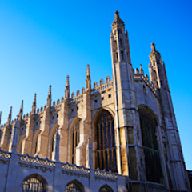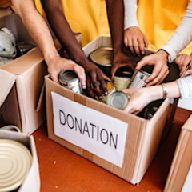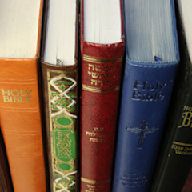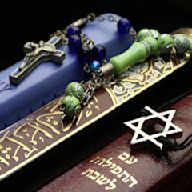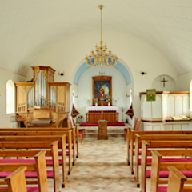Search results
Discover more placesNear Columbus, OH
3 days ago · Synagogue, in Judaism, a community house of worship that serves as a place for liturgical services and for assembly and study. Its traditional functions are reflected in three Hebrew synonyms for synagogue: bet ha-tefilla (‘house of prayer’), bet ha-kneset (‘house of assembly’), and bet ha-midrash (‘house of study’).
- The Editors of Encyclopaedia Britannica
A synagogue, also called a shul or a temple, is a place of worship for Jews and Samaritans. It has a place for prayer (the main sanctuary and sometimes smaller chapels) where Jews attend religious services or special ceremonies such as weddings, bar and bat mitzvahs, choir performances, and children's plays.
- What Does Synagogue Mean?
- What Does A Synagogue Look like?
- The Ark
- The Ner Tamid
- The Bimah
- The Amud
- The Mechitzah
- Who’s Who in The Synagogue?
- When Do People Attend Synagogue?
- Endnote
The word “synagogue” is the Greek parallel to the Hebrew term beit knesset, “house of gathering.” It is also referred to as a shul, a Yiddish word related to the English word “school,” thus named since Torahis studied there as well. Synagogues can be found virtually wherever there are Jews and have been in use since the Babylonian exile. Find a syn...
The exact dimensions of a synagogue vary, reflecting the culture, needs, means and tastes of those who built it and use it. However, you can generally expect it to have chairs (or pews) arranged in such a way that the worshipers are facing toward Jerusalem, once the site of the Holy Temple, and the place through which all prayers ascend to G‑d. Lea...
In the front of the sanctuary is a cabinet called the aron kodesh (“holy ark”), which contains the Torah scrolls, the most sacred objects in Judaism. Handwritten in Hebrew letters on parchment, each scroll contains the Five Books of Moses. The scrolls are stored in the ark and are removed only to be read during services or on other special occasion...
In many synagogues there is an eternal light (ner tamid), situated above the ark. The flame (or light bulb) is a symbol of the “western lamp,” which continually shone in the Holy Temple in Jerusalem. Learn more about the ner tamid.
Traditionally placed in the center of the sanctuary and facing toward the front of the room is the bimah(“platform”), the table from which the Torah is read. It is often (but by no means always) covered by a cloth and placed on a raised stage. Learn more about the bimah.
The prayers are led from the front of the room. There is generally a lectern, called an amud(lit. “pillar”) on which the leader (who also faces the front) can place his prayerbook. The curtain of the ark, as well as the cloth coverings of the bimah and amudcan be any color. However, during the High Holidays white coverings are generally used, refle...
In Jewish tradition, men and women sit separately during prayers. In many (older) synagogues, seating for women is in a gallery above the sanctuary. It is more common, however, for men and women to both be seated on the same level with a mechitzah(“partition”) between them. Read: What’s Wrong With Mixed Services?
The Rabbi: A synagogue rabbi is the spiritual guide of the congregation. In many communities, the rabbi also delivers a sermon on Shabbatand holiday mornings and on other special occasions. Read: What Is a Rabbi? The Rebbetzin:In many congregations, the wife of the rabbi takes on a quasi-official leadership role, guiding, teaching and leading. The ...
Jewish prayer takes place three times a day: morning, afternoon and evening. The afternoon and evening services are often held back to back. On Shabbat the services are somewhat longer, and often better attended. Read: The Three Daily Prayers. Many people attend synagogue for other important lifecycle events, such as: 1. A circumcision, also known ...
All of above is just the basic intro the synagogue, but remember that the best way to get to know the synagogue is to visit the synagogue. The natives are friendly, and so are the rabbis, so just feel free to drop in and make yourself at home!
The Synagogue: Background & Overview. The Synagogue: Table of Contents | Customs & Etiquette | The Mekhitza. The synagogue is the center of the Jewish religious community: a place of prayer, study and education, social and charitable work, as well as a social center.
As the role of the synagogue has expanded, especially in North America, the education of children and adults has become a more pronounced function. A new position, Director of Education, has emerged, with responsibility for formal and informal Jewish educational programs for children and youth.
1. A Synagogue Is a Place for Prayer. The primary function of the synagogue is to serve as a place for prayer. Although you can speak to G‑d in private, praying in the synagogue is considered preferable, and prayers said as part of a congregation are more readily heard on high. Read: What Is Jewish Prayer? 2.
A synagogue is a place of worship and study, and a "town hall" Synagogues are run by laypeople and financed by membership dues. There are several important ritual items found in the synagogue. Non-Jews may visit a synagogue, but dress and should behave appropriately. The Temple is the ancient center of Jewish worship where sacrifices were performed
